By Miva | December 14, 2021

See why top ecommerce brands use Miva’s no-code platform to run
multiple stores, manage massive catalogs, and grow their revenue.
Here’s a stat that every online seller should pay attention to: in 2023, 73% of all ecommerce shopping carts do not make it to checkout. If we break down that figure by device, the news is even more alarming, with 79% of all mobile shopping cart pages abandoned before purchase. Since the early days of ecommerce, figuring out how to reduce cart abandonment has been a constant concern for merchants, for good reason. If, for example, your store were to sell an average of $1000 worth of orders per day, these estimates indicate you might be losing an additional $2700 in potential sales from abandoned carts every day, or $985,500 in sales every year!
In this blog, we’ll identify six very common reasons that shoppers move on without completing a purchase. The good news is, each and every one of these factors can be improved—and this applies to retail as well as B2B cart abandonment. Then, scroll down to see an infographic which distills the main issues and offers actionable techniques that can result in great shopping experiences…and lead to more sales.
Seeing prices on a cart page can induce sticker shock for some customers. As they prepare to commit to the purchase, price-sensitive customers often abandon their shopping carts if your prices feel too high. Customers may be weighing your prices against your competitors’ offerings, or comparing against historical pricing from the past. In either example, now is the time to make the case for the price you wish to charge.
The shopping cart page is one more place that you can effectively speak about your value proposition, perhaps in the form of additional feature highlights, image content, social proof, or compelling branding elements. How you make this final pitch is up to you, but it’s important to hit the gas and start justifying pricing and closing the sale prior to final checkout. Read more about how to price a product here.
No online shopper wants to feel the “gotcha” of a sudden add-on fee at the last second. Consider whether any additional service fees—including tax, shipping, and convenience charges—can be reduced or eliminated. Barring that, transparency is key.
An excellent best practice for improving cart functionality and successful purchases is to clearly display all extra fees before the customer arrives at checkout if possible. It may seem counterintuitive from a sales perspective to announce more fees on the cart page, but by eliminating any pricing “surprises” as soon as possible, you will prevent sudden changes of heart. Learn how checkout quotes can reduce the "gotcha" effect here.
Even a small whiff of security concerns can lead to abandoned carts. Customers need to trust that you are handling their data and funds with the utmost safety and sensitivity. This can be most obviously displayed with copy or badging which guarantees PCI-compliance, but ecommerce trustworthiness also extends to shopping cart design, and the overall look and feel of your entire website.
Even if your shopping cart integration is relatively straightforward, if a customer has encountered broken or poorly designed site elements on the way to that cart, they are already candidates for cart abandonment. Find out more ways to create trust on your website here.
Across all of ecommerce, customers now expect fast delivery. 62% of shoppers even expect all shipping to be free! For these reasons, slow or costly shipping can be big factors in ecommerce cart abandonment. If you are not able to accelerate delivery times and absorb some of their costs, it’s imperative once again to be very transparent with details as soon as possible. The shopping cart template and checkout page layout can address this, with well-designed content that updates in real time with shipping estimates. This can be accomplished by integrating cart and checkout pages via API with fulfillment systems and services. Take a deep dive into how to leverage ecommerce integrations here.
Payments and payment gateways can be powerful conversion drivers. Offering customers a range of choices which are convenient, trustworthy, well-known, and branded can tip the scales in your favor at the time of final purchase. Customers may wish to pay with debit, credit, gift cards, PayPal, or Square, among other options, as well as utilizing one-touch transactions.
The more flexibility you offer in payments, the more reasons customers have to buy. This blog explains how to turn payments into conversion drivers.
Site speed is one of the most important—and most overlooked—factors of a successful ecommerce website. A fast, high performance shopping experience is especially important on the cart page, when the slightest delay can give customers an opportunity to change their minds.
Site speed optimization for page loading times are crucial. Just a difference of a single second can cost your business completed sales.
A complicated checkout process can certainly increase the number of abandoned checkouts. Choosing or building a user-friendly shopping cart template that ensures a swift and intuitive checkout can help reduce this. Everything on this page should be optimized for your customers’ ease and convenience, including the number and complexity of form fills, thoughtful layout of order info and product imagery, and the amount of time it takes to navigate the page.
This customer-first approach is an excellent rule of thumb for all of your site pages, with extra care given to those pages which comprise the "last mile" of a purchasing journey. We look at the value of simple guest checkouts here.
Below, we have created a useful infographic which explains the drivers of cart abandonment and offers several actionable techniques for addressing it. A great shopping cart strategy should be a part of any ecommerce business, and here's why: after browsing your catalog and making their selections, the shopping cart page acts as a closing summary not just of shoppers’ order details, but of your entire business and shopping experience.
Here’s a prime culprit for poor cart performance: a shopping cart design that may have been deployed several years ago is likely now outdated. Cart functionality is often treated as a “set it and forget it” website feature, but the cart needs to remain fresh, relevant, and regularly updated, just like every other aspect of your ecommerce site. If you sense that poor site speed, clunky layout, and a lack of conversion optimization are holding you back from capturing more business, it may be time to consider a redesign or a replatform. We looked at when it's time to replatform an ecommerce website here.
The ultimate drivers of your business are always your customers' attention, preferences, and loyalty. Offer them a modern, efficient shopping experience, and you'll convert those abandoned carts and checkouts into more successful sales.
This blog was originally published on December 14, 2021, and updated on June 22, 2023.

Katy Ellquist, Miva’s Digital Marketing Strategist, is an accomplished writer, marketer, and social media analyst who has created sophisticated content campaigns for a broad range of professional clients. She brings to Miva a complex understanding of ecommerce trends and techniques, building upon extensive digital agency experience and a prior role as direct liaison to Miva’s top accounts. Katy is a regular contributor to the Miva blog, covering essential ecommerce topics like design & development strategy, site optimization, and omnichannel selling, with the goal of increasing the actionable knowledgebase of the entire Miva community.
Love it? Share it!
No worries, download the PDF version now and enjoy your reading later...
Download PDF Miva
Miva
Miva offers a flexible and adaptable ecommerce platform that evolves with businesses and allows them to drive sales, maximize average order value, cut overhead costs, and increase revenue. Miva has been helping businesses realize their ecommerce potential for over 20 years and empowering retail, wholesale, and direct-to-consumer sellers across all industries to transform their business through ecommerce.
Visit Website